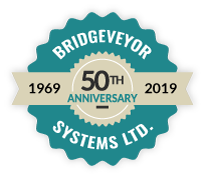4 Safety Tips for Using an Overhead Conveyor
Believe it or not, there’s a major downside to having a piece of machinery. Like your overhead conveyor system, that works reliably day in and day out, every year for decades. That absolutely reliable operation can mean you don’t pay as much attention to the system. Letting it become a bit of an afterthought, even though you rely on it every day.
As an afterthought, some of the best practices for using your conveyor safely can be lost when there’s no need to practice them. Unfortunately, that can lead to an accident that could have been easily avoided.
So, because you probably haven’t thought twice about the operating safety of your overhead conveyor in quite some time. Here is a refresher course of safety tips.
1. It’s Overhead, so Protect your Head
If your system transports heavy and/or hazardous materials, and it travels over places where people work. Make sure that they wear hard hats to protect their heads.
2. Be Careful with Loose Clothing and Long Hair
While the conveyor runs overhead and is less likely to travel close to workers. You should still examine the entire course of the conveyor and look for spots where it does come close to employees. If you find any, make sure everyone keeps loose clothing tucked in and their hair tied back and/or in their shirts.
3. Leave Guards in Place
Enclosed track conveyors are enclosed to not only reduce the chances of contaminating the products they carry but also to prevent personal injuries. Over time, the enclosure might be removed in a section of track or along the entire track. Or it may not have been replaced after maintenance. In any case, if you see even a small section of track that is not covered. Replace the cover or alert your manager.
4. Don’t Climb, Walk, Touch or Otherwise Contact the Overhead Conveyor System
Again, over time, the overhead track can become part of the ‘background’ of your facility. Then, when someone needs to reach something up high it’s: “hey, this conveyor has been here forever, it must be strong enough to support my weight.” Except it might not be.
Even if safety is a priority in your workplace. Systems that cause no problems, or are not usually a major safety hazard, can be neglected in the company’s safety training. Make sure you don’t have any unpleasant safety surprises. By keeping your employees informed about the hazards that might be around your overhead conveyor system.












